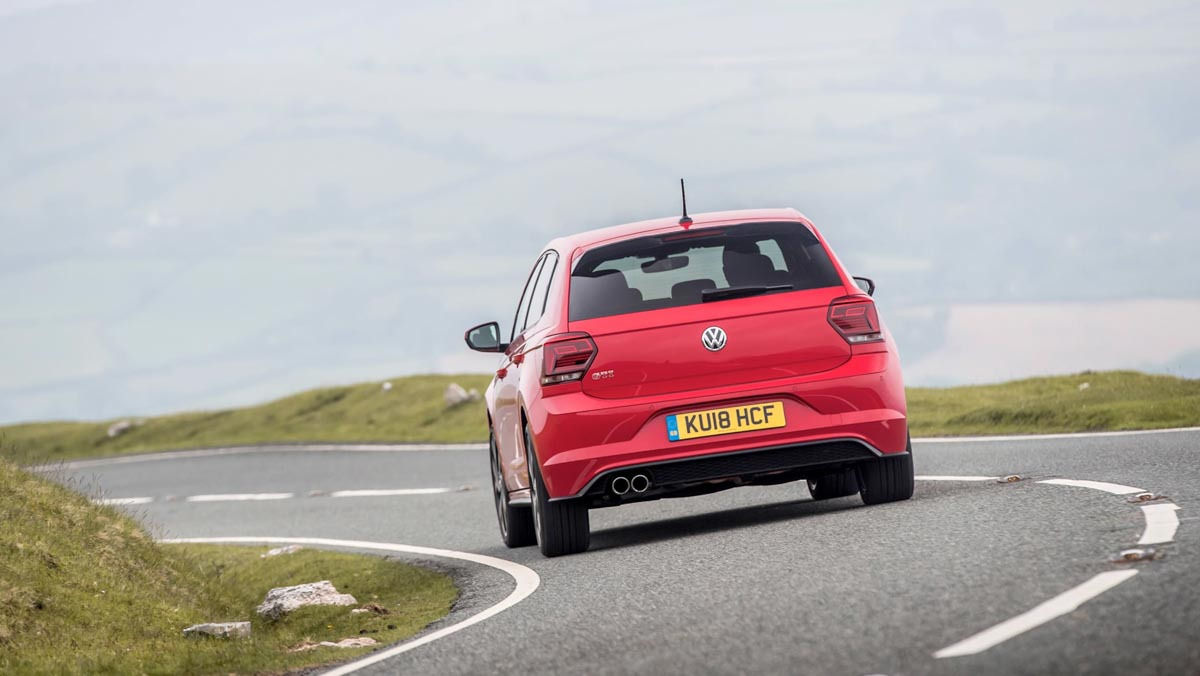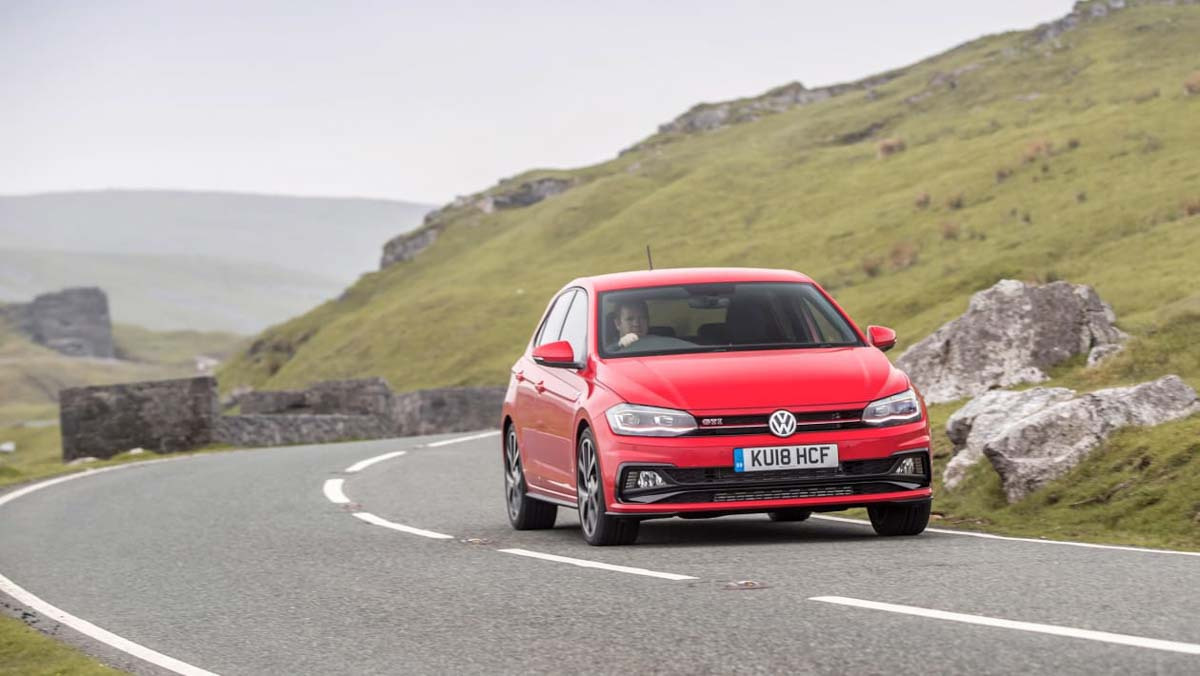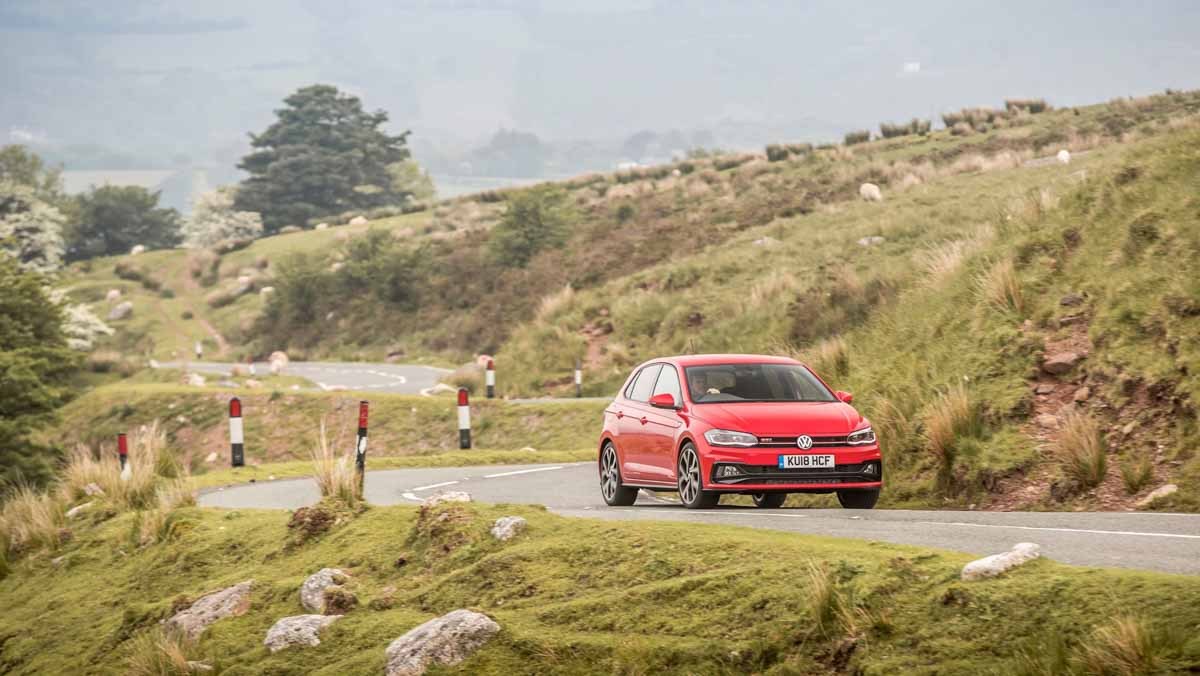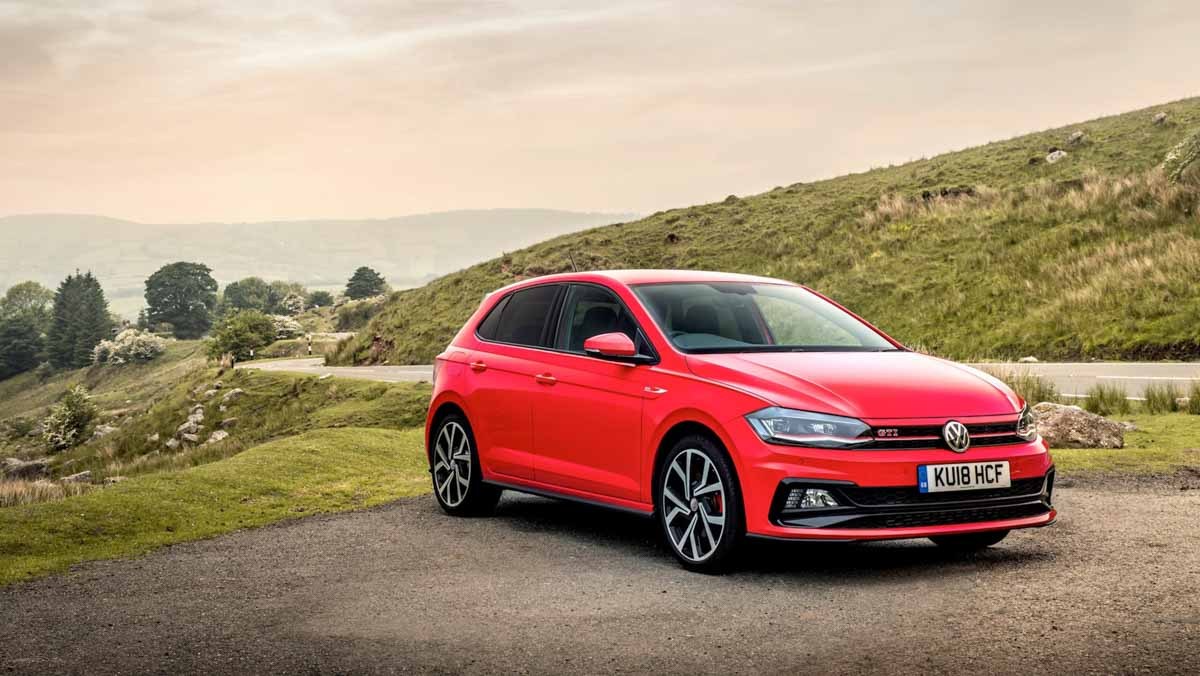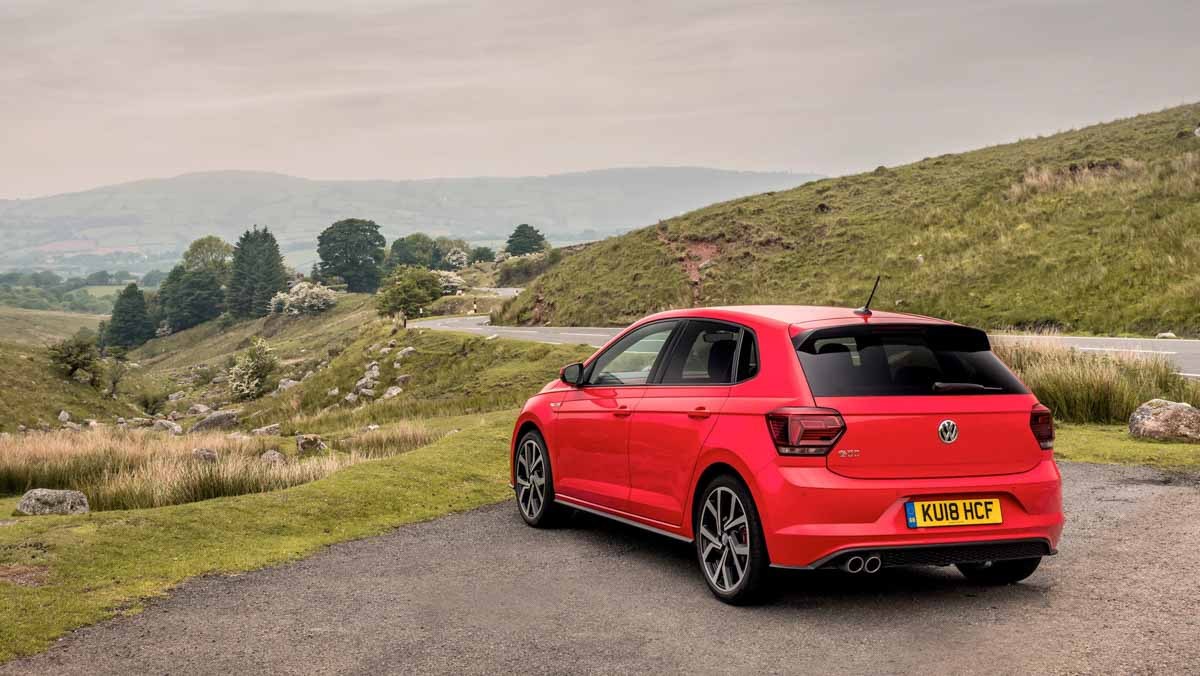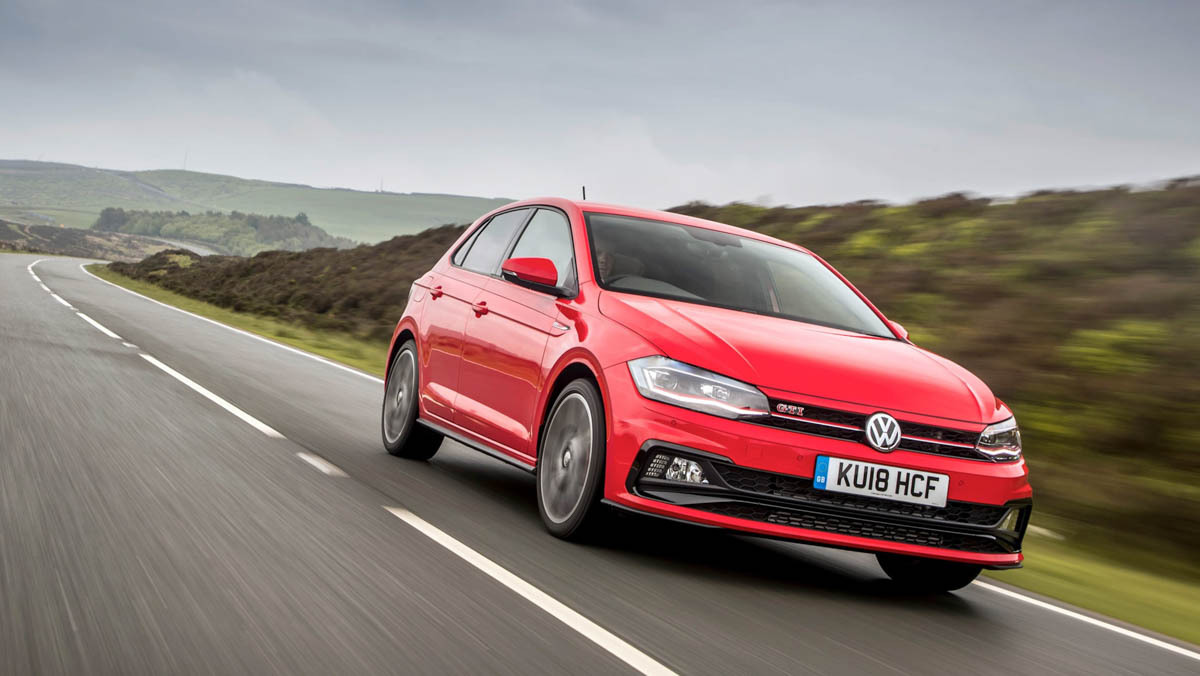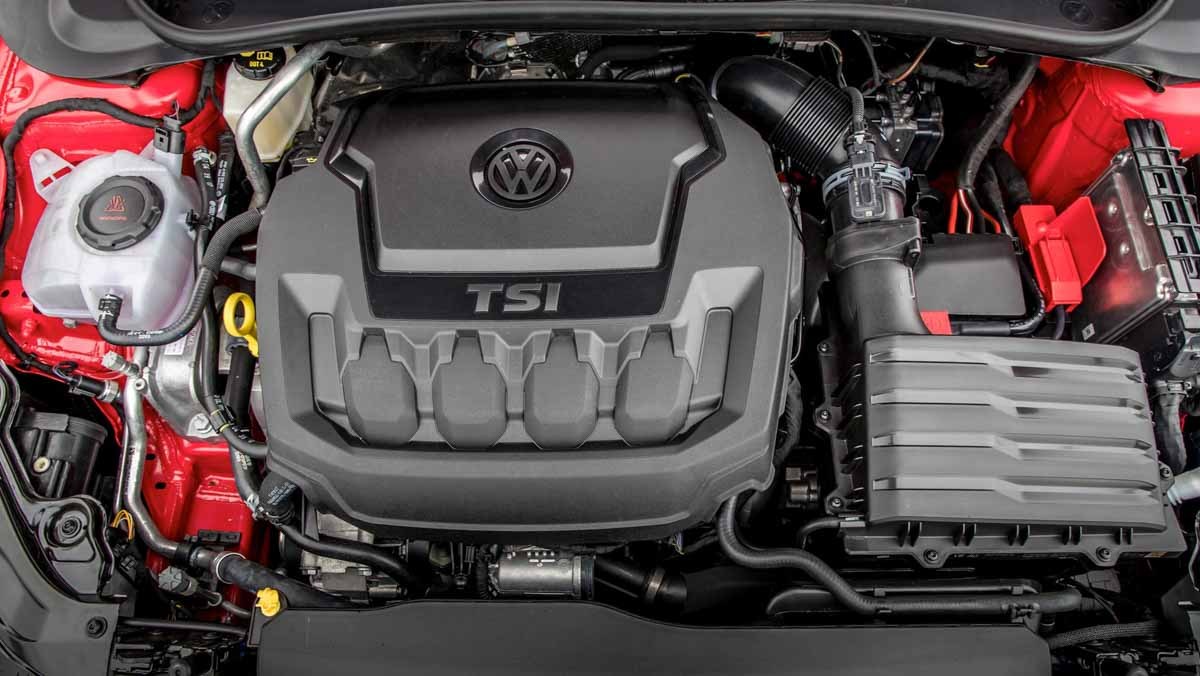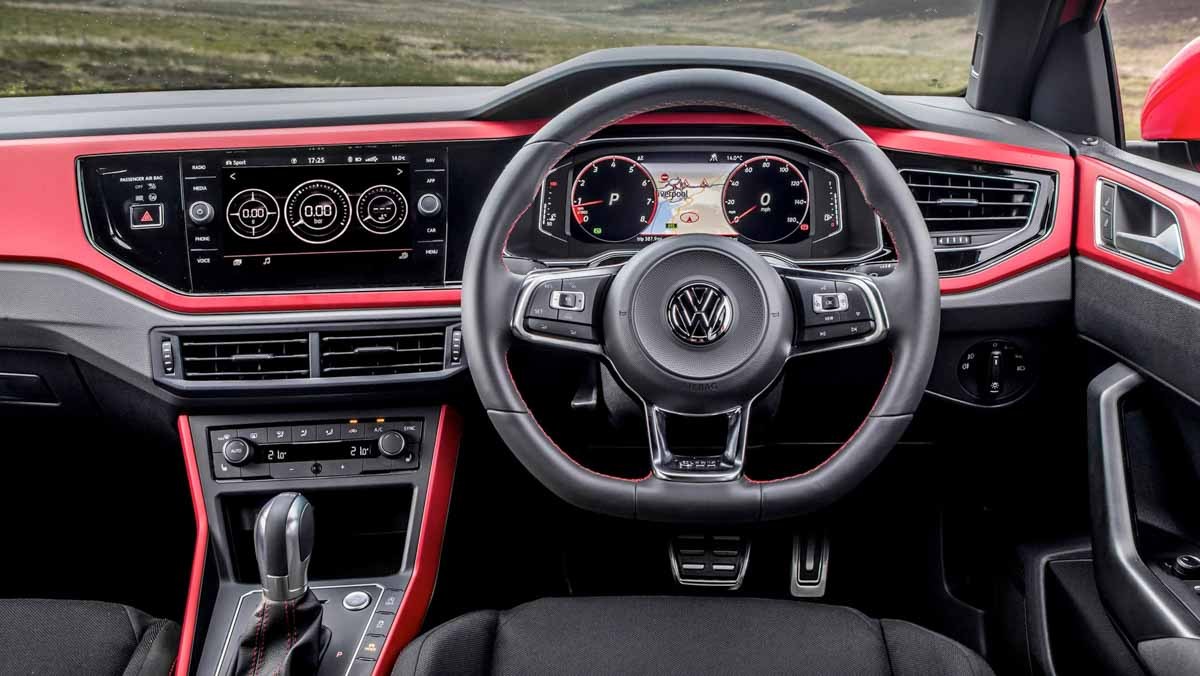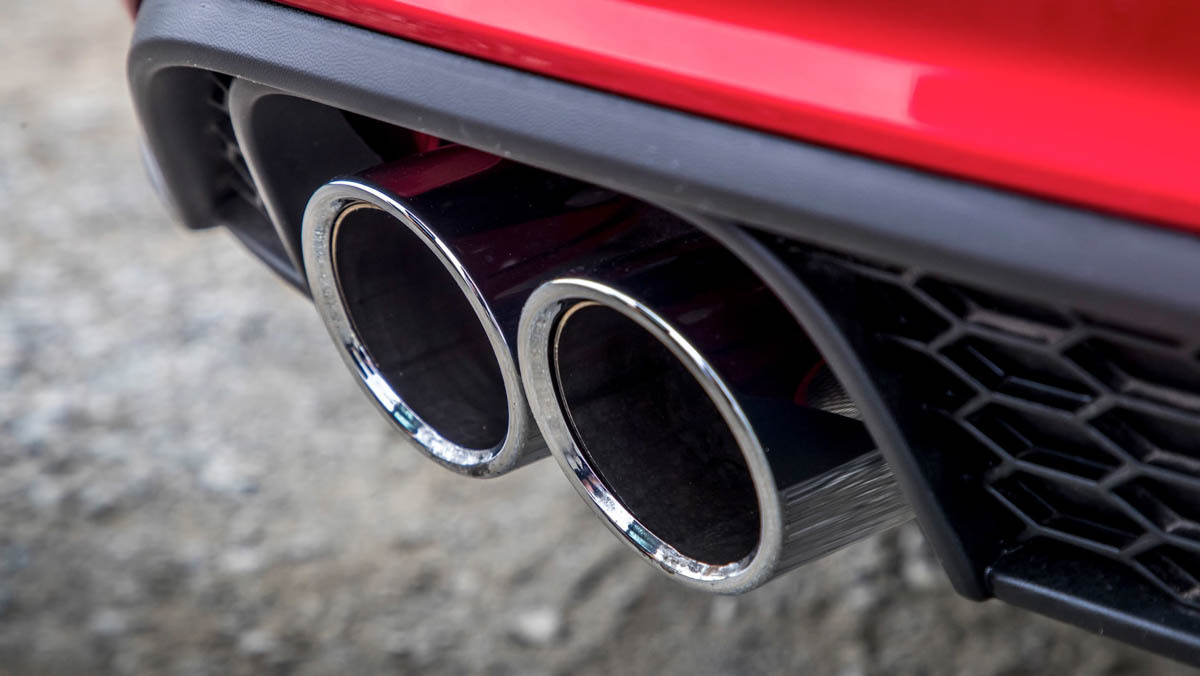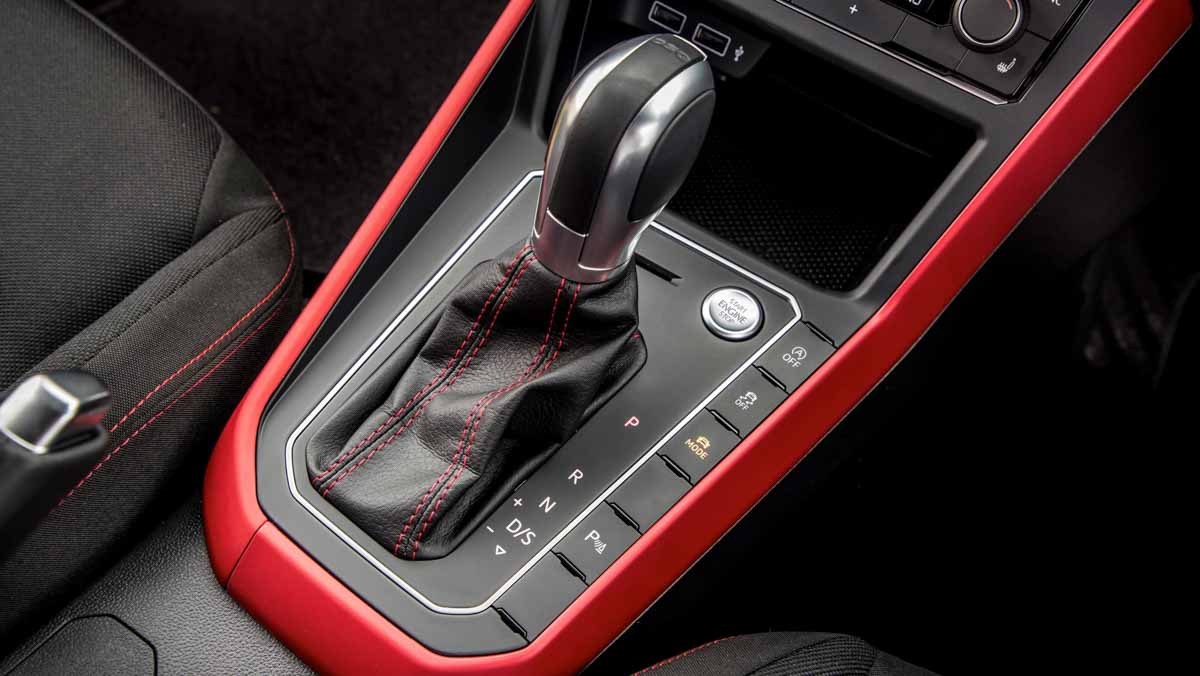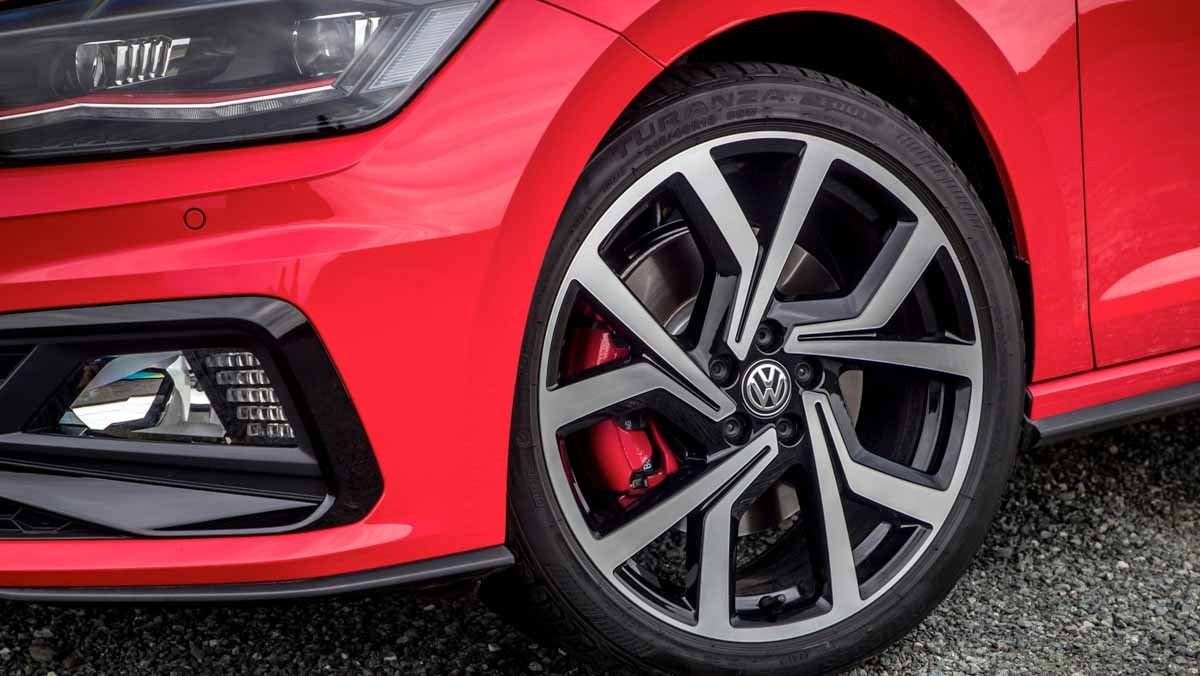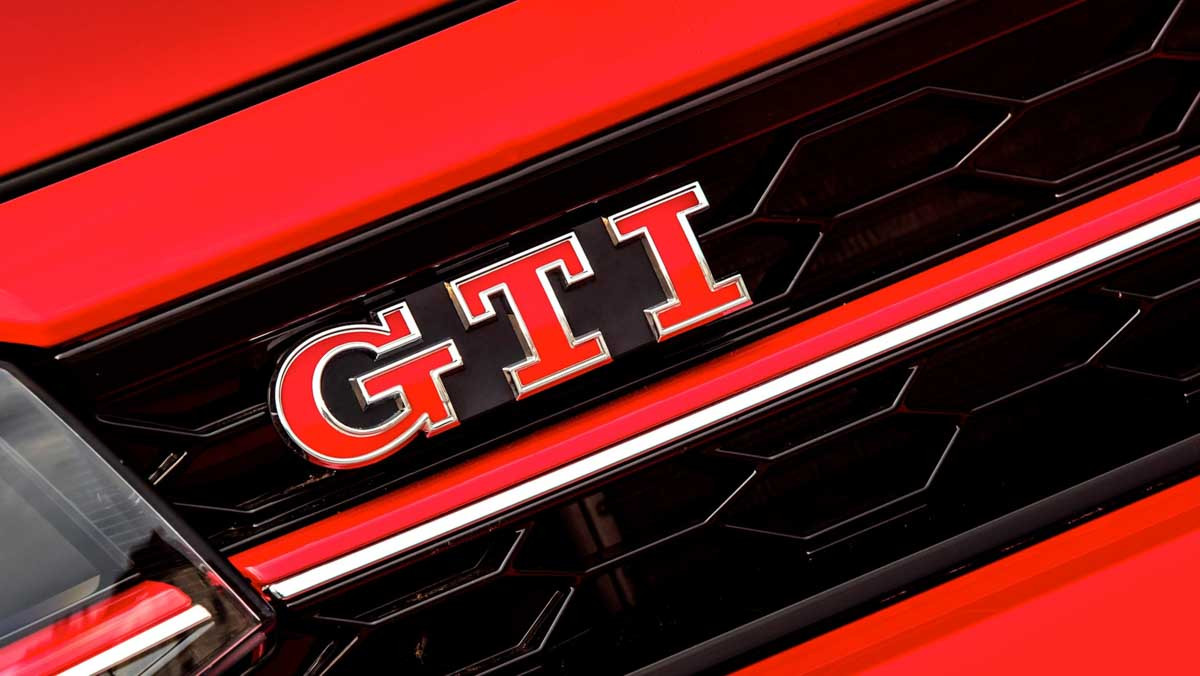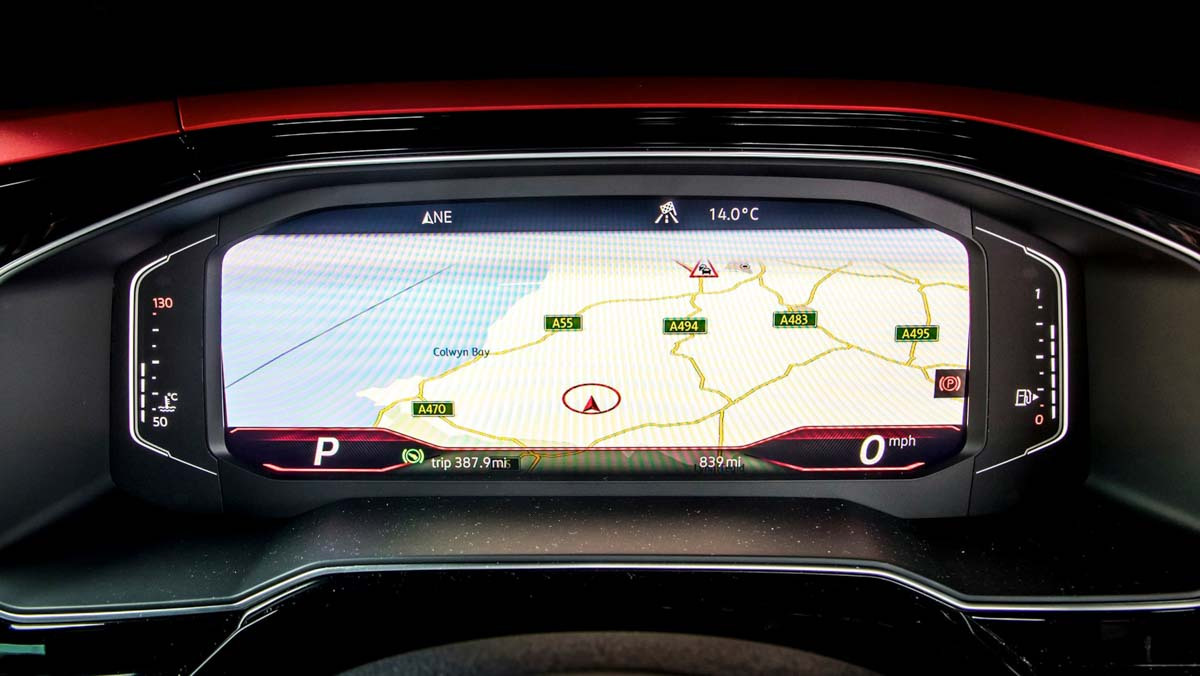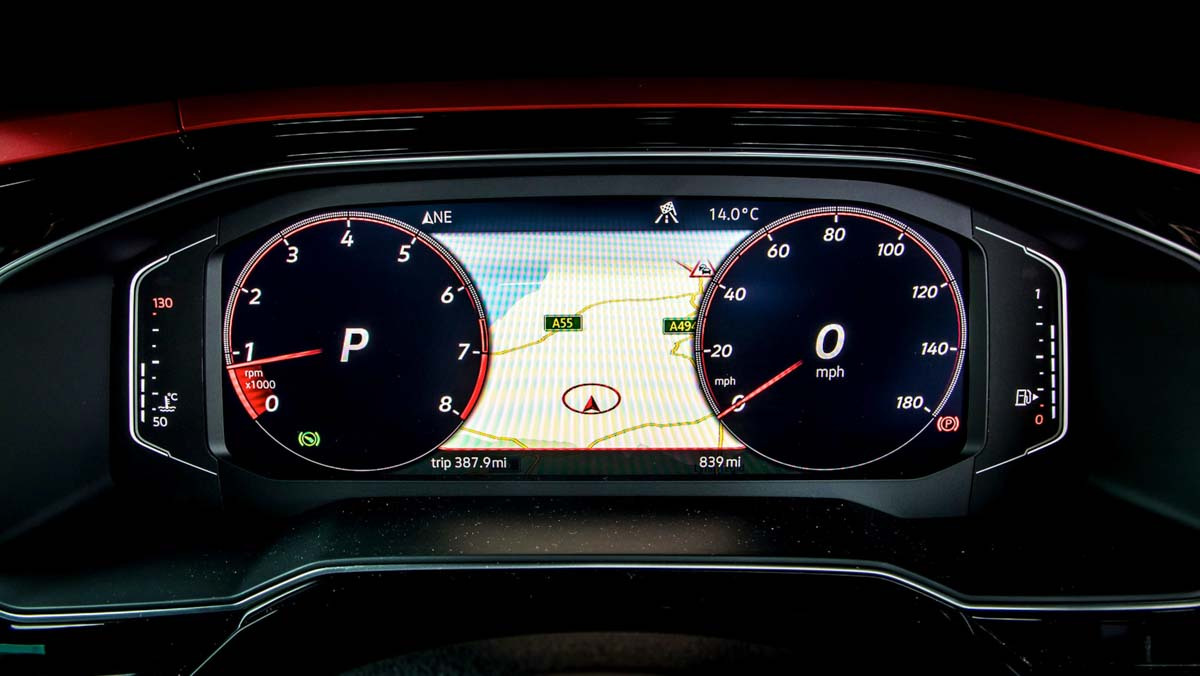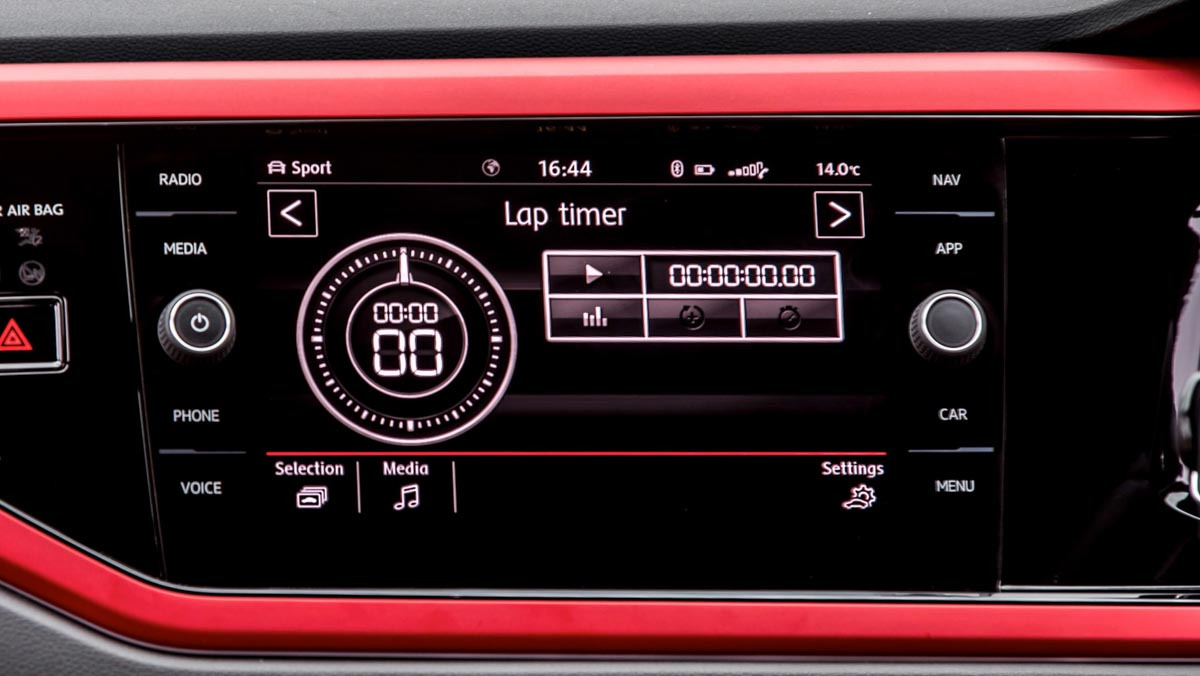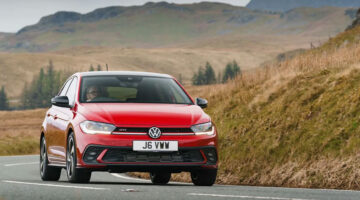VW’s Polo GTI is polished and capable, but lacks the intensity of most rivals
| Impressive mid-range grunt, competent daily driver | |
| One-dimensional handling, adept but not exciting |
PRICE from $30,000
The Volkswagen Polo GTI has always found itself in something of a predicament. Typically a grown up and mature supermini, the Polo has never quite been comfortable when transformed into its hot GTI variant, and struggled to find favour with enthusiasts as a result. While undoubtedly capable, Polo GTIs have always lacked a certain sparkle that often shines brightly in rivals like the Fiesta ST.
Visually, the Polo is not off to a great start. The now five-door-only body is largely shared with the standard Polo save for a few details, itself a pretty conservative and underwhelming design. It does have specific front and rear bumper assemblies, with trademark GTI design cues like the honeycomb grille and red highlights, but even they struggle to lift the Polo GTI above indistinct.
Under the skin, however, Volkswagen has made more of an effort. The Polo GTI shares the Golf’s MQB platform, albeit in simplified form, a brawny EA888 turbocharged 2-litre four-cylinder engine and VW’s virtual XDS front diff. This uplift in hardware is a good start, but how does the package come together?
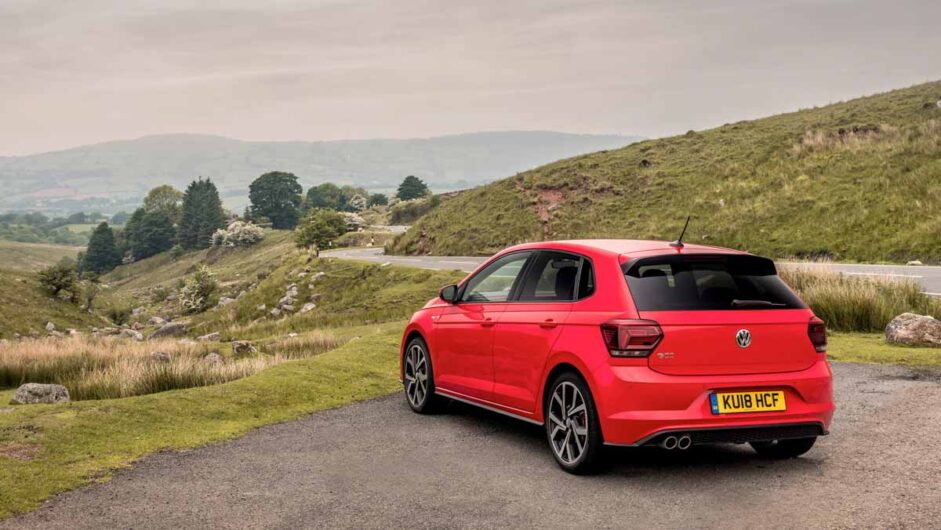
Prices, specs and rivals
As of the beginning of 2021, the Polo GTI has been taken off-sale, with what VW has confirmed a small break before being returned to sale later this year. Previously, the sixth generation Polo GTI was available in two models – basic GTI and GTI Plus. The Plus model didn’t include any mechanical upgrades, rather added levels of equipment. As standard, all the usual GTI goodies applied, including tartan sports seats, 17-inch wheels, twin exhaust outlets and a subtle, but still obvious, rear wing.
Those Plus models added adaptive cruise control, LED headlights, Volkswagen’s digital dial pack and heated and folding mirrors. Both models were available with options like larger 18-inch wheels, sunroof and an upgraded infotainment system with embedded sat nav if you wished to further bolster the Polo’s standard equipment. Prices for the basic car started at just over $30,000, with the Plus model $2000 more expensive at $32,000.
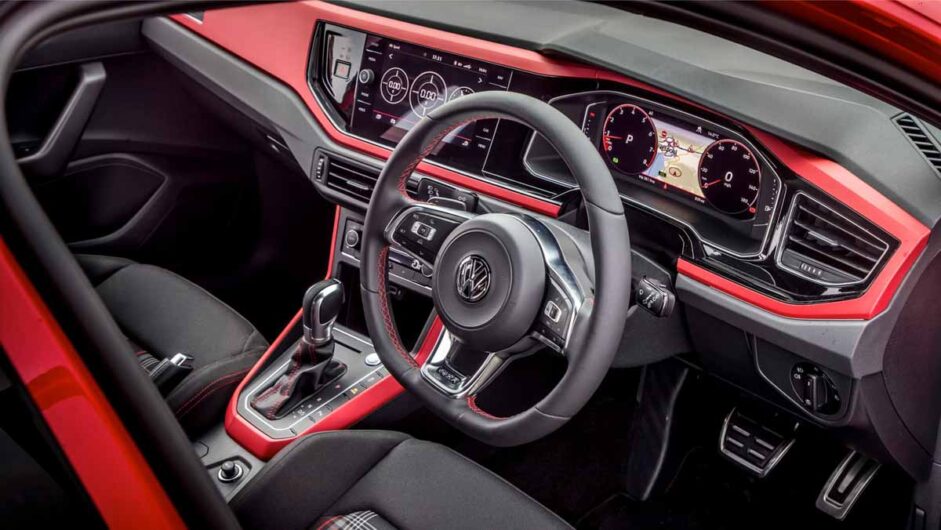
The arrival of the new WLTP emissions regime combined with the ebb and flow of new models arriving and old ones departing the supermini hot hatch class is in a state of transition at the moment, with less choice than there used to be. Peugeot’s 208 GTi by Peugeot Sport has been a firm evo favourite for the last couple of years, offering a far more dynamic driving experience than most rivals, dominated by its rev-happy 1.6-litre turbocharged four-cylinder engine and scalpel-like front end. But along with machines such as the DS 3 Performance it’s no longer offered which perhaps leave the new Ford Focus ST as the most entertaining car in the class.
Like the Polo GTI the Fiesta ST is available in two guises, ST-2 and ST-3, and has the advantage of being offered in both and three- and five-door bodystyles. Prices undercut the GTI, admittedly not by much, but in ST-3 guise it’s as well equipped as the Polo, too. What the Ford does offer though is a manual gearbox and a much more interactive driving experience with a chassis that will entertain in a way that’s not possible with the Polo GTI.
The typically polished Mini Cooper S is also a constant threat, offering a similar combination of a 2-litre turbocharged engine and dual-clutch gearbox in its facelifted guise. The Mini might initially look like a cheaper car too, but despite a lower price tag for the Cooper S Classic it’s considerably down on equipment when compared to the Polo. To match the equipment levels of the Polo, especially in Plus form, the cost discrepancy increases as its tempting options list is raided. Toyota’s brilliant GR Yaris is a more expensive, yet thanks to performance attributes that go way beyond the remit of what many might expect of something with a Yaris badge attached to the boot-lid is actually a bargain at just under $40k for the base. Hyundai’s new i20 N is also hoping to bring some fire to a previously benign model line, but that won’t arrive until mid-2021.
Performance and 0-100 time
VW claims the DSG-equipped Polo will rattle off the 0-100kph sprint in just 6.7sec. Yet, while it feels as fast as the numbers suggest when going all out, it never feels quite as quick as its torque figure and relatively low 1355kg kerb weight suggests.
There’s plenty of muscle at low speeds, but the delivery goes a little flat in the mid-range – it feels as if the car’s potential is being deliberately reined in so as not to tread on the toes of the Golf – although this reluctance could also be explained by the tall intermediate gears. Incidentally, both power and performance figures are nigh-on identical to the Fiesta ST, despite its lack of 500cc and a cylinder.
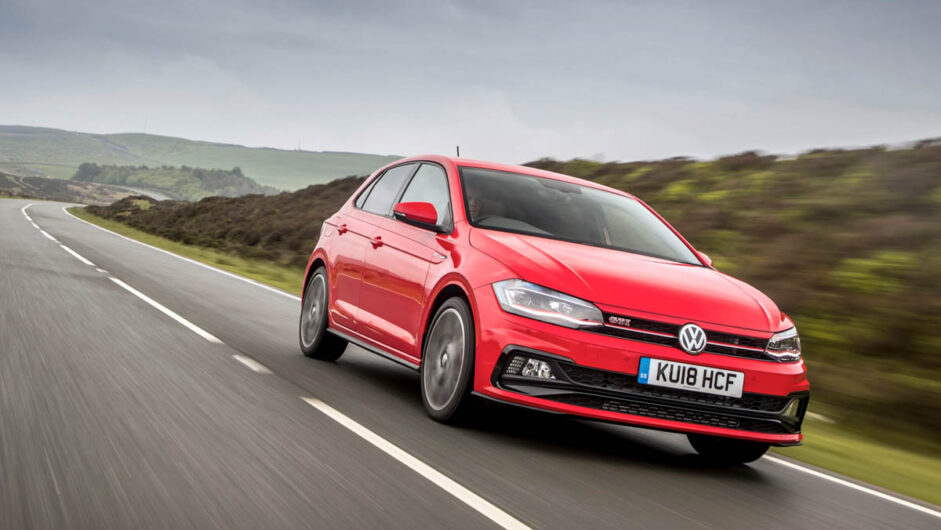
Engine, gearbox and technical highlights
You could definitely say the ears of the evo office pricked up when we heard the new Polo GTI would finally be fitted with a proper GTI engine. Unlike the previous generation car, which offered both the 1.4 twin-charged four-cylinder engine (which sounded much better on paper than it was in reality) and later a 1.8-litre TSI engine, this GTI features the well-proven, torque-rich EA888 from the Golf GTI. Producing 197bhp at between 4400 and 6000rpm, and 236lb ft of torque from 1500 to 4400rpm, the Polo offers an identical power output to the Mk5 Golf GTI, and even more torque.
The Polo’s sole transmission is a six-speed DSG dual-clutch gearbox with paddles mounted behind the steering wheel. A manual gearbox was due to arrive in late 2018, says Volkswagen, but it never actually made it to market. The DSG gearbox is typical VW, with an inherent slickness to gear changes and excellent response from the paddles. Town driving is not the transmission’s forte though, as it will often lurch between gears and hesitate when pulling away. As the road opens up, though, the Polo’s DSG makes more sense, slipping between gears and shifting with an alacrity missing in most mainstream rivals.
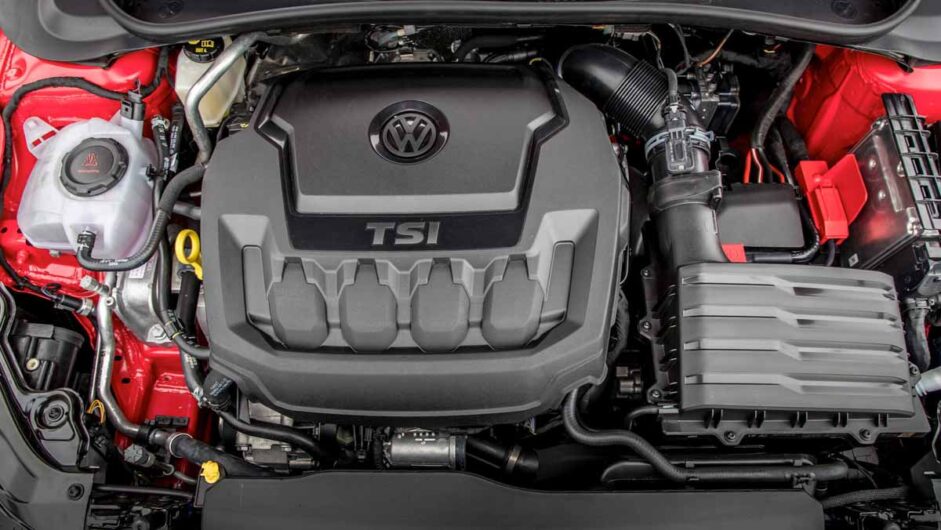
There is one caveat to the gearbox, however: it has an inherent lack of drama. It seems to go about its business without any real urgency – the shifts, although quick, have none of the pomp and circumstance of the Golf, even when pressing on. The effect is yet one more element that seems to have come from VW’s vast collection of components, rather than being one specifically engineered for this application.
The 2-litre turbocharged engine also has its weaknesses, as while it might share an engine code with some very talented hot hatchbacks, the Polo’s flat torque curve leaves the engine feeling a little breathless and lacking any real enthusiasm for the upper third of the rev range. It’s a defining character in rivals like the Peugeot 208 GTI and previous Fiesta ST, but like so many supermini hot hatchbacks is lacking in this application. Fingers can also be pointed at the gearing, which has the long-legged gait which too is becoming a common issue. As a result, the engine feels flexible, rather than enthusiastic. Effective, but not very GTI.
Ride and handling
VW has made some big noises about the Polo GTI’s ‘playfulness’. With the larger Golf being pushed upmarket, the field is left clear for VW to deliver a more fun hot hatch. Certainly the Polo’s compact external dimensions (I say ‘compact’, it’s actually larger than a Golf MK4 in every dimension other than length), low weight and big engine should make for a genuinely entertaining package.
Initial impressions are good, because like its big brother, the Polo benefits from slick and naturally-weighted steering, almost perfect control weights and a taut yet controlled ride – on our Sport Select-equipped car, at least. Push harder and there’s strong bite from the front tyres and a definite sense that the rear axle is taking its share of the load, and on the smooth and snaking roads of our Spanish test route the VW felt planted and poised. Like the Golf, it covers ground quickly, with an almost clinical precision. And therein lies the problem. Once you’ve tackled a few corners you’ve pretty much got the measure of the Polo. The steering is quick and precise but there’s only the bare minimum of feedback, while that grippy chassis doesn’t want to get expressive. Lifting the throttle will tighten the car’s line, but there’s no sense of the puppy-like agility you get in the 208 GTi.
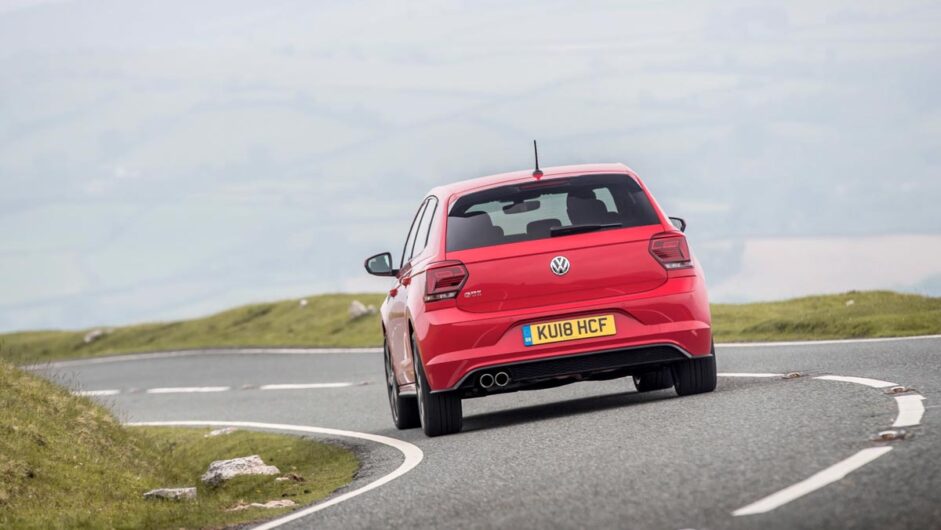
The XDS ‘differential’ is also no substitute for the real thing. Torque vectoring means there’s plenty of grip when you turn in, but with the ESP in its halfway house Sport setting (you can’t turn the systems off completely) the inside wheel simply spins power away out of slower turns. Selecting Sport sharpens the throttle, adds artificial weight to the steering and fractionally firms up the dampers, but the Polo’s benign character remains. It’s an effective way of getting from A to B quickly, but not a thrilling one.
Take things easy and the GTI is a normal Polo, which means it’s refined, roomy and easy to drive – few superminis are as simple to live with. So it’s a shame much of this good work is undermined by the brittle ride. The car fidgets and hops over small imperfections and only really settles down on the smooth, longer frequency bumps normally found on motorways. Even cars fitted with the optional two-way dampers ride with an uncomfortably sharp edge.
L/100km and running costs
Volkswagen claims the Polo will sip fuel at a rate of between 7.3L/100km and 7.1L/100km on the combined cycle under the new WLTP testing regime, but like most turbocharged engines it will consume significantly more when driven with enthusiasm.
The EA888 is otherwise well established, and has proven to be extremely reliable. Given its low state of tune compared to some other applications (new versions found in the Golf R are pushing 320bhp) it’s also a lightly stressed unit. The DSG is somewhat more problematic, as clutches are considered wear and tear items and do need replacing. How long they’ll last does vary though, and like many dual-clutch gearboxes or the old-school single-clutch semi-automatics depends vastly on driving style. Actuators and hydraulic pumps can also fail, and while this is less common, any time a dual-clutch transmission case needs to be cracked, repair bills are often high and sometimes excruciating.
Interior and tech
Thanks to the new Polo’s substantial growth in width, space inside appears far more generous than most superminis, feeling well screwed together, without being too grown up. The GTI bits are crucial to this, as the usual appearance of tartan seats and red stitching, augmented with new elements like the giant slab of red plastic stretched across the dashboard, help lift the otherwise dull interior. The seats are near perfect, comfortable and supportive, having enough lateral support without resorting to supersized bolsters that restrict access.
The GTI’s excellent steering wheel also adds to this sense of sportiness, as although we aren’t particularly fond of flat-bottomed wheels, the smooth leather and perfect grips help lift the GTI’s interior over mainstream Polos. It would be nice to have some more substantial paddle shifters behind the wheel, but they feel reasonably solid and are an acceptable trade-off for their quick-witted responses as compared to other dual-clutch gearbox supermini hot hatches, whose paddles look good but are slow to respond (looking at you, Renault Sport Clio).
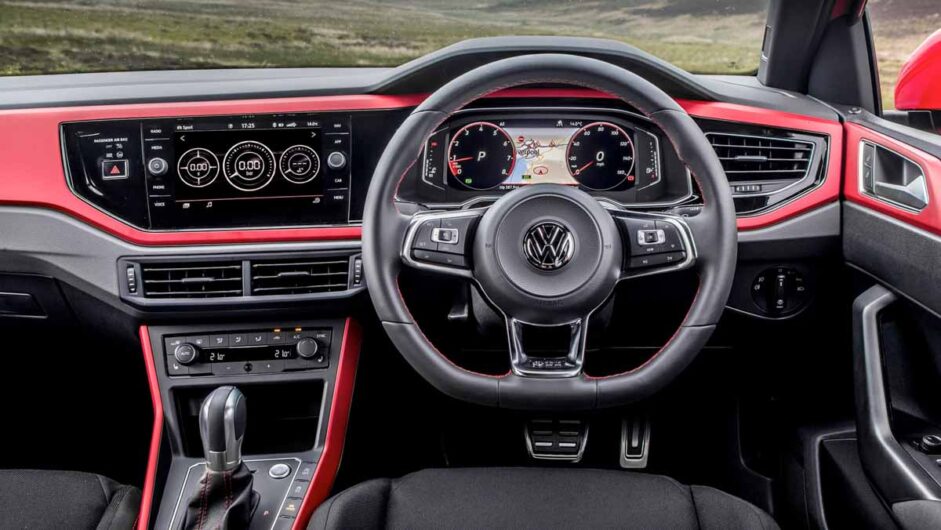
In typical VW style, though, all the touch points are almost perfect. The driving position is near spot-on, unlike many superminis, with plenty of adjustment in the steering and seating positions. The high-mounted infotainment system is also placed in exactly the right position, close to the driver’s eye-line without looking like an afterthought like most floating screens. Beside which, Plus cars are fitted with VW’s Active Info display, a screen replacing the traditional dials. These screens are becoming increasingly in vogue, but its use in a supermini definitely gives the Polo GTI’s interior a distinct USP, although it’s not quite as high resolution as the Golf.
Design
Volkswagen has done something remarkable with the new Polo. Despite a completely new platform, the new Polo looks almost identical to its predecessor. Sure, look closely at the details and you’ll notice that the bodywork is more complex, the lighting units heavily faceted, but whether by accident or design, a step forward into the future, the Polo’s design is not.
All the usual GTI paraphernalia is correct and present, though, with liberal use of red highlights on the brakes, badging and the iconic red stripe across the front bumper. Like the Golf, the Polo GTI’s headlights are also bespoke, that red line extending into the lighting unit itself.
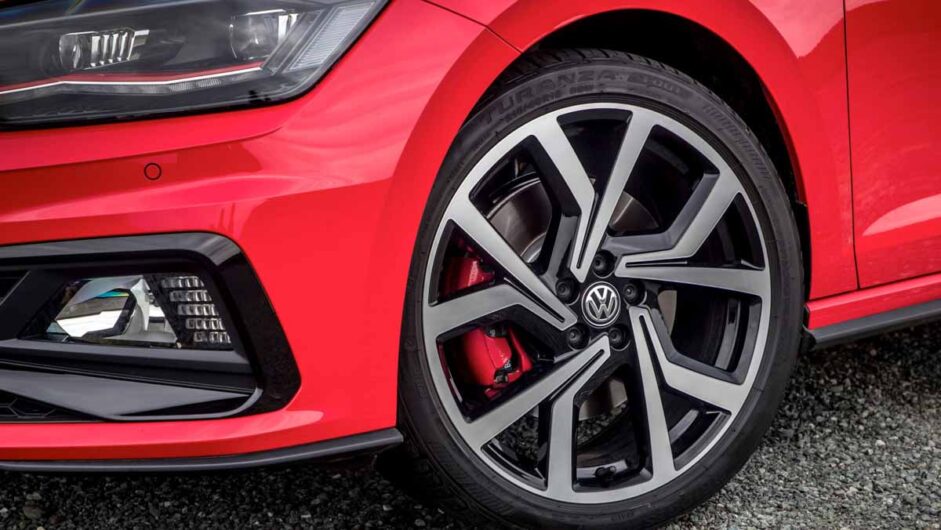
As is the usual GTI way, the Polo is grown up, purposeful, but not too obvious, a perfectly formed metaphor about the way the Polo GTI drives. Spec wisely and the Polo GTI will easily slip past unnoticed. Whether that’s what you want in a hot hatchback, however, is something to be considered. Maybe the forthcoming, but not yet delivered, manual gearbox option will offer a much needed injection of driver engagement.
This article originally appeared at evo.co.uk
Copyright © evo UK, Dennis Publishing

